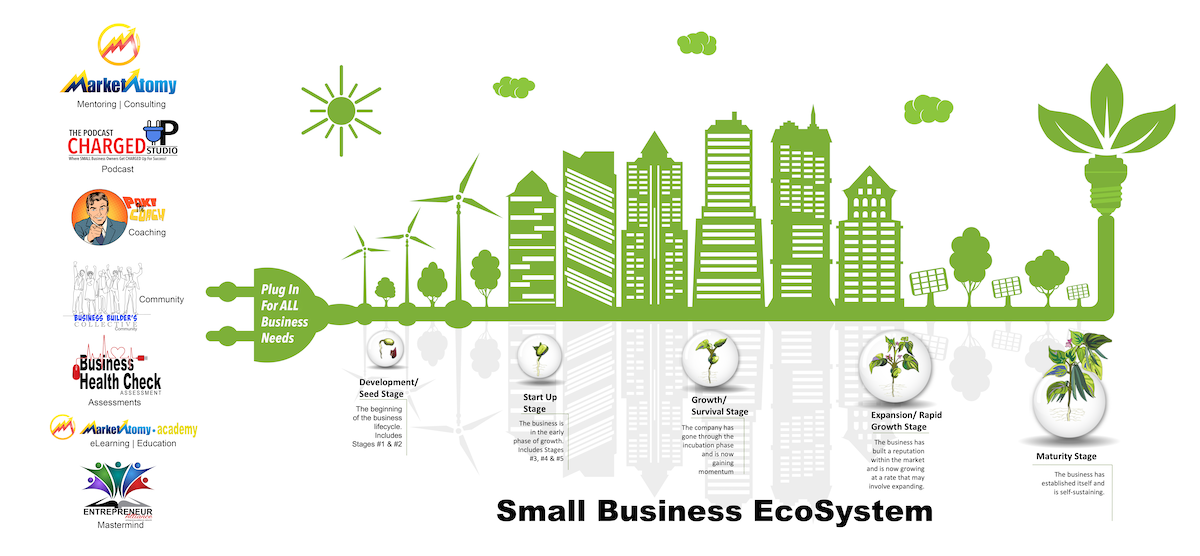No products in the cart.

Business Ecosystems are one of the most commonly used terminologies across the business landscape. We often see institutions mention these ecosystems, and we also often hear high-valued companies worldwide likewise employ these business ecosystems to generate and improve customer value efficiently. So how do we define business ecosystems?
A business ecosystem pertains to the network of organizations that includes customers, suppliers, distributors, competitors, foreign policymakers, and so on. All these players are involved in the production and delivery of a specific product or service. The business ecosystem is simply the concept where members of its system must work hand-in-hand with and around each other in order to stabilize the system, thus optimizing the collective benefit. Like any other ecosystem that naturally exists in the world, a perfectly balanced ecosystem benefits all participants involved, and the opposite hold true to poorly defined ecosystems. Participants in the business ecosystem achieve more value if they work collectively than work individually. Every business ecosystem has its own participants, and this ecosystem requires at least one or more members to serve as the orchestrator that is held responsible for the structure and performance, including its Governance and management. A good understanding of the business ecosystem and its application is critical for companies to keep up with, or even stay ahead, of the global change of pace.
Dramatic changes in global demographics have been taking place. To give an example, the United Nations has predicted that by April 2023, the world’s largest population will be taken over by India from China. China’s population has already peaked while India’s is growing continuously. With this rapid expansion of population, the challenge lies in India on how it can capitalize on this. Most of this population in India belongs to the working age sector, and in theory, it should mean greater productivity. But there are many obstacles to this. Thus various sectors have explored the use of Business Ecosystem Models to help overcome these barriers.
As they say, no one entity can do it all in today’s intense competition in the business world, no matter how powerful and mighty. If you remain isolated, then you run the risk of getting left behind. As the idea of digital collaboration is becoming more common today, companies must cooperate and engage in business ecosystems. Through this cooperation, it can lead to various advantages not only for the company itself but for its potential customers as well. These companies can be granted access to multiple networks by plugging into these business ecosystems. With this, they will be able to find more customers in an easier and more timely manner, get access to new sources of data, and even improve established business processes.
One of the most common barriers to why organizations do not want to be involved in business ecosystems is the lack of familiarity with the framework to begin with. This common pitfall makes many companies, from small to big, avoid the idea of engaging in ecosystems. Various seminars and framework model lectures are being made to combat this barrier.
Perhaps one of the sectors which can fully appreciate the advantages of engaging with this business ecosystem is no other than the technology sector. Even start-up companies with promising technological products will be given an equal chance of global recognition through the use of these business ecosystems. Aside from the technology sector, the health and wellness sector also is a promising area for ecosystems. As of today, people have been focused greatly on pharmaceuticals in order for them to provide solutions to various health issues, be they physical or mental. Emerging solutions to difficult-to-treat problems like Post-traumatic Stress Disorder are currently underway and has been made possible through the use of networking between business. Expansion of ideas and business growth has never been faster, thanks to these business ecosystems.
Building and maintaining an ecosystem remains, however, a daunting task. Business ecosystems are more of an art rather than a science. One of the most difficult aspects of ecosystem leadership is that companies need to face two interdependent tasks: to maintain the organization (Internal Governance) and to maintain the ecosystem. Both have their own distinctive challenges, and both need to be addressed. Organizations that lack the necessary framework and structure can easily fall prey to these ecosystem challenges. As a result, their production, if any, will be predictably uncoordinated. And this lack of coordination will, in turn, will lead to poor decision-making and many opportunity costs.
Big and complex companies especially find it challenging to maintain Internal Governance. This is because these companies find it hard to let go of the command-and-control Governance. This centralized and bureaucratic culture makes it quite unattractive for members who thrive on speed and flexibility. To overcome this, central control must give way and empower micro-organizations’ periphery to decide and adopt operating models as the situation arises. This not only promotes autonomy but also promotes a faster decision-making process. For this to be effective, the business ecosystem must have a strong framework of values and business strategies.
In contrast to Internal Governance, the maintenance of the ecosystem is a different challenge. One difference is that ecosystems lack the constitutional framework that we can see from any organization. Moreover, members of an ecosystem may also have adopted different operating models, and folding these diverse models to work under one organization is almost impossible. Lastly, the members of the ecosystem must also deal with often unpredictable, constantly changing dynamics. These challenges can be mitigated by creating a deal structure that is based on the mutually negotiated terms of the majority of the members, established primarily on the value shared by most.
The ecosystem and its members affect and are affected by one another, thus creating a constantly evolving relationship. Each member of this ecosystem must be flexible and continuously adapt in order for the whole system to survive. This concept has revolutionized how companies approach their respective businesses. These business ecosystems allow quality goods to be marketed effectively by collaborating with different members that are working hand-in-hand in this partnership.
MarketAtomy LLC has developed a true business ecosystem committed to strengthening the small and micro business sector. This ecosystem brings together industry experts, mentors, and coaches in a multi-level information distribution model targeting small and micro business owners.

The goal of the ecosystem is to reduce the number of failed small businesses through education, cognitive awareness, accountability, and resource management. For more information go to www.marketatomy.com.
Danna Olivo is a Growth Strategist, Author, and Public Speaker. As CEO of MarketAtomy LLC, her passion is working with first-stage business owners to ensure that they are prepared and equipped to launch and grow a successful small business. She understands the intricacies involved early on in business formation and as such the challenges that come with it. A graduate of the University of Central Florida’s College of Business, Danna brings more than 40 years of experience strategically working with small and medium businesses, helping them reach their growth goals. danna.olivo@marketatomy.com